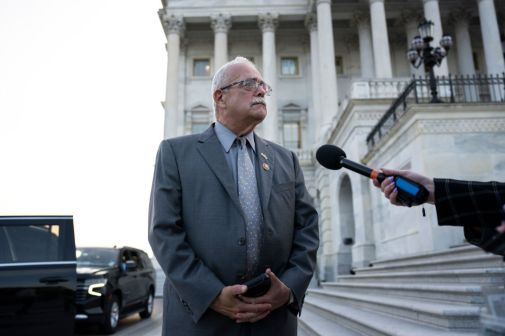Eliminating the cultural barrier to innovative acquisition
This is the third in a series of stories profiling a governmentwide movement on innovating federal acquisitions.
Innovative acquisition has reached a tipping point within the federal government. Different communities of practice, many with the support of upper-level leadership, are popping up around government and sparking a conversation on the use of innovative procurement methods — like agile development, iterative and user-centered design, and rapid prototyping — to buy IT.
But for innovative acquisition to really spread — for true change to be made — these groups must address and empower a cadre of federal acquisition professionals accustomed to buying IT one way: with as little risk as possible.
“We have a very punitive, risk-averse system that treats most every mistake or failure as an ethical or criminal act as opposed to just a mistake,” said Stan Soloway, president and CEO of the Professional Services Council and former Defense Department deputy undersecretary for acquisition reform. “So we shouldn’t be surprised that the workforce, particularly those on the acquisition side, is risk averse.”
Yet innovation is inherently bound to risk — to innovate is to bear the risk of failing, something many throughout the budding innovative acquisition community encourage because it drives an opportunity to learn and iterate.
“If you want to talk about innovation, you better be able to talk in the same sentence about risk and risk management, because innovation by definition has high risk,” Soloway said.
“One of the big problems that we are seeing is that everyone is too afraid to fail and that there’s not an ability to have a learning environment,” Traci Walker, a lead contracting officer with the U.S. Digital Service, said at a Federalwide Buyers Club conference in February.
The irony is that the comfortable waterfall procurement methods IT acquisition professionals commonly enlist rarely turn out to be successful because they are low-risk up front and tailor nicely with the Federal Acquisition Regulation.
“For the longest time, we just used traditional routes, and we’ve gotten ourselves in kind of a pickle with these high failure rates, whether they’re $1 million contracts or $100 million contracts,” said Mark Naggar, the program manager for the Department of Health and Human Services’ Buyers Club and the Federalwide Buyers Club, referencing a damning statistic from the Standish Group that claims big IT projects in and out of government fail 94 percent of the time.
The acquisition professionals resistant to change aren’t necessarily bad people either, said Dan Doney, chief innovation officer with the Defense Intelligence Agency. They’re just “risk averse by training.”
“It’s good people trying to do the right thing by the government who for a long time were trained in these models that were very much designed to minimize risk,” Doney said. “Innovation and risk happen to be tightly coupled. By minimizing risk, we are also minimizing innovation, and that’s a problem. And no longer can we afford to block out the best ideas wherever they emerge. It’s a threat to national security.”
But groups like the Buyers Clubs and USDS are showing that there are better ways to do acquisition, to mitigate risk and increase the chance of successful IT acquisition.
“You can’t solve everything. There’s no guarantee to success. But there’s steps we can take to significantly mitigate failure and increase success rates,” Naggar said, pointing to agile methodology and how it helps the end product be more effective. “It’s like you handing me a business plan and I poke holes in it as your adviser or mentor. You kind of want me to do that. That lets you know you have some mistakes and you can go back and fix them and strengthen” it.
With traditional waterfall methodologies, IT shops hand off their needs to procurement officials, and then months later they receive something based on a proposal and contract that may or may not be what they want. In some cases, Naggar said, the contract may stretch on so long without feedback that what an IT team wanted originally becomes outdated.
Soloway argues that to extend innovative strategies beyond the small communities where they’re generated, they have to “take the learning from these activities, experiments and innovations and apply them so that you … improve the broader competitive atmosphere and acquisition environment.”
“You’re not going to change government through little pockets of innovation,” he said. “We have to find a way for it to take root and to then scale. And the way you scale is through learning.”
Two documents — the TechFAR Handbook and the Innovative Contracting Case Studies manual — highlight the ability for agencies to legally step outside of the comfortable procurement ways of the past.
These great ideas mark a good start for innovative acquisition, but Soloway, who experienced the difficulties of acquisition reform in the ’90s with the DOD, said it takes more.
“We had lots of good ideas, in those days considered innovative,” the PSC CEO said. “But a lot of them fell by the wayside over time because we never got to building the [workforce and cultural] infrastructure around them to enable them to thrive. It has got to be something that is a constant source of collaborative learning across the different elements rather than this sense that no one else can do it.”
Change leadership is less about telling people to do something than it is involving them and empowering them to be part of the change, he said.
“A change strategy has to be inclusive, because if it’s not, ultimately the entrenched forces will outlast you,” Soloway said. “That’s just a fact of bureaucracy. And so you have to find a way to engage people. And you will find that a lot of people, as entrenched as they are, if engaged right, are in fact willing to change and open to change.”
Marina Martin, the chief technology officer of the Department of Veterans Affairs, is taking that approach to develop a following for the new Digital Service at VA team. Martin said the team must be the model of the change it wants to see.
“There’s a lot of fear, and I think perhaps even a little bit of resentment when you bring in new people or new ideas. It’s, ‘Hey, what we had before was working,'” she said at the Buyers Club event. “And you’ve got to bring folks in and find opportunities however big or small for them to work together and view it as a learning experience, a cooperative experience and not a forced experience.”
Naggar, who is also using early success with the HHS Buyers Club to spread awareness, thinks of it in terms of a bell curve for adoption, where these groups now are the early adopters who have to attract the masses along the curve. And to do that, they have to ease the tension by leading by example.
“As more of us do more things in our own agencies, there’s going to be more trust developed from contracting officers, program managers, IT folks and all the other stakeholders,” he said. “As we shift along that bell curve, more and more folks are going to get it and they’re not going to be as risk averse. They’re going to be comfortable knowing that the folks that came before them have tried this.”
Former 18F Executive Director Greg Godbout said that’s the biggest challenge facing the proliferation of innovative acquisition.
“It’s empowerment of employees to do this sharing and to keep working together. The more of this type of connectivity across the federal government that occurs, typically this master innovation will happen,” Godbout said. “Ideas get better when you share them and people collaborate amongst them. So if we can create that culture, then frankly I think there’s no stopping this. But if the culture doesn’t come along, it will be like pushing a boulder uphill.”






